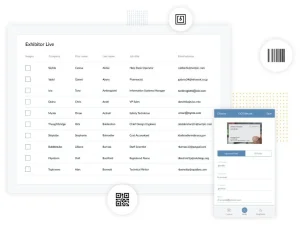Campaign finance laws regulate how much money candidates can raise and spend to run for office. These rules aim to prevent undue influence by wealthy donors.
There are a variety of ways to raise money for a political campaign. Typical methods include events, digital fundraising, and mailers.
It is important to keep campaign and personal funds separate. This is important to maintain transparency and avoid any appearance of corruption.
1. Use a spreadsheet
Many local elections authorities and governments maintain online databases where you can find information about campaigns in your area, including their expenditures. This can be a great resource as you develop your own budget.
There are a number of different expenses that can be categorized, such as staff salary, research, equipment, rent, office material, data and consultants. Other expenses can include things like event costs, (social) media and candidate support. You should always try to budget 10% more than you think you will need, to avoid having to skimp on essentials and pay for expensive campaign trinkets that don’t move the needle in terms of growing voter support.
It is also a good idea to set your budget before you set your fundraising goal. This will help you craft realistic and achievable fundraising goals that are aligned with your planned expenses. Alternatively, you can map out your projected expenses first and then set a fundraising goal that is in line with those expenses.
2. Use a money management program
It is important for candidates to track their finances to ensure they meet federal spending limits. This helps them avoid fines and other penalties. Using a money management program makes the process easier and more organized.
Laws regulating campaign finance vary significantly across countries. They may include limitations on who can donate to a candidate, rules for disclosing financial information, and mechanisms for monitoring and enforcing compliance with regulations.
Conventional wisdom suggests that large donations to political campaigns and parties are a form of corruption, and in exchange for those contributions donors expect specific legislative outcomes, or “quid pro quos.” Campaign finance regulation seeks to reduce the impact of such donations by limiting their size and scope. The most common method of achieving this goal is through disclosure and reporting requirements, which are mandated in all 50 states. Other methods include public financing programs, which give candidates a government subsidy in return for agreeing not to raise private funds and to limit their spending.
3. Open a bank account
Having a strong budget in place is one of the most important aspects of a successful campaign. This helps you keep costs down, and ensures that your funds are going towards the things that will actually help win votes.
Prioritize at least 60% of your funds for talking directly to voters. Whether through ads, radio, TV or real-world rallies, your message needs to be heard by as many people as possible.
Also, remember to use digital channels like email and peer-to-peer texting. This will allow you to reach a wider audience and build your supporter base. Additionally, it is best to leave 5% or 10% of your overall funding in a contingency fund. This will help you weather unforeseen expenses and unanticipated fundraising ebbs or flows. In addition, it will help you stay in compliance with federal campaign finance rules. If you have questions about this, consult a campaign finance attorney. You must also register your committee and open a bank account in order to receive contributions and spend money.
4. Avoid getting a campaign credit card
The most slick campaign strategy, best shake hands and kiss babies can all be rendered moot without the resources to get out the vote. Make sure you budget for administrative costs (which can be up to 10% – 12% of your total spending) and fundraising expenses. This will include your fundraising team and software/app tools designed to help you raise money, as well as other costs like printing, office supplies, travel expenses, insurance, etc.
One way to develop your budget is to look at the fundraising and spending data from past campaigns in your jurisdiction. This is a good idea, but be careful not to compare apples to oranges, as the size and scope of your race will vary greatly. For example, a gubernatorial campaign’s budget will not be comparable to that of a school board election. Another thing to watch out for is large payments to outside consulting firms. These may be perfectly legitimate, but they should still be carefully investigated, Maguire said.












More Stories
Audio Marketing Strategies Beyond Podcasts: Voice Search and Social Audio
Marketing for Sustainable and Circular Economy Brands: The New Playbook
Building a Marketing Strategy for the Creator Economy and Solopreneurs